The Royal Palace of Cambodia is one of the most iconic and breathtaking landmarks in Southeast Asia. Located in the heart of Phnom Penh, the capital city of Cambodia, this architectural masterpiece serves as the official residence of the King of Cambodia and a symbol of the nation’s rich history and cultural heritage. Whether you’re a history enthusiast, a culture lover, or an adventure seeker, the Royal Palace offers an unforgettable experience. In this guide, we’ll explore the palace’s history, its must-see attractions, and tips for making the most of your visit.
A Glimpse into the History of the Royal Palace of Cambodia
The Royal Palace of Cambodia was constructed in 1866 during the reign of King Norodom, who moved the capital from Oudong to Phnom Penh. The palace complex was designed to reflect the grandeur of the Khmer Empire and to serve as a symbol of the monarchy’s power and prestige. Over the years, the palace has undergone several renovations, but it has retained its traditional Khmer architectural style, with intricate carvings, golden spires, and lush gardens.
The palace is not just a historical site; it is still a functioning royal residence. While some areas are open to the public, others remain private, reserved for the royal family and official ceremonies. This blend of history and modernity makes the Royal Palace a unique destination for travelers.
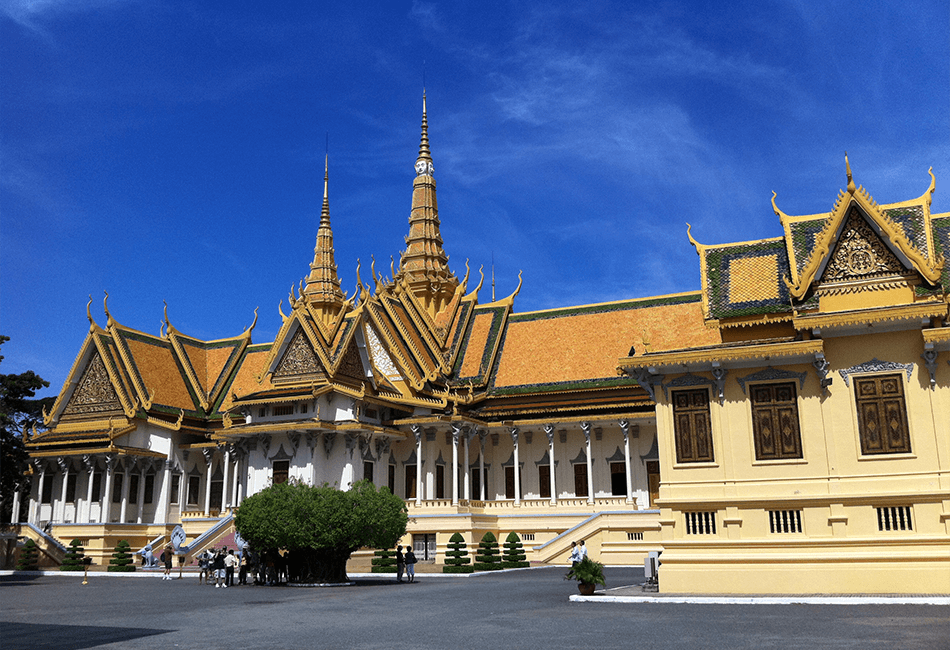
Must-See Attractions Within the Royal Palace Complex
1. The Silver Pagoda (Wat Preah Keo Morakot)
The Silver Pagoda is one of the most famous structures within the Royal Palace complex. Named for its floor, which is covered with over 5,000 silver tiles, this pagoda houses some of Cambodia’s most sacred treasures. Inside, you’ll find a life-sized gold Buddha statue adorned with 9,584 diamonds, as well as other precious artifacts. The pagoda’s walls are adorned with stunning murals depicting scenes from the Reamker, the Cambodian version of the Indian epic Ramayana.
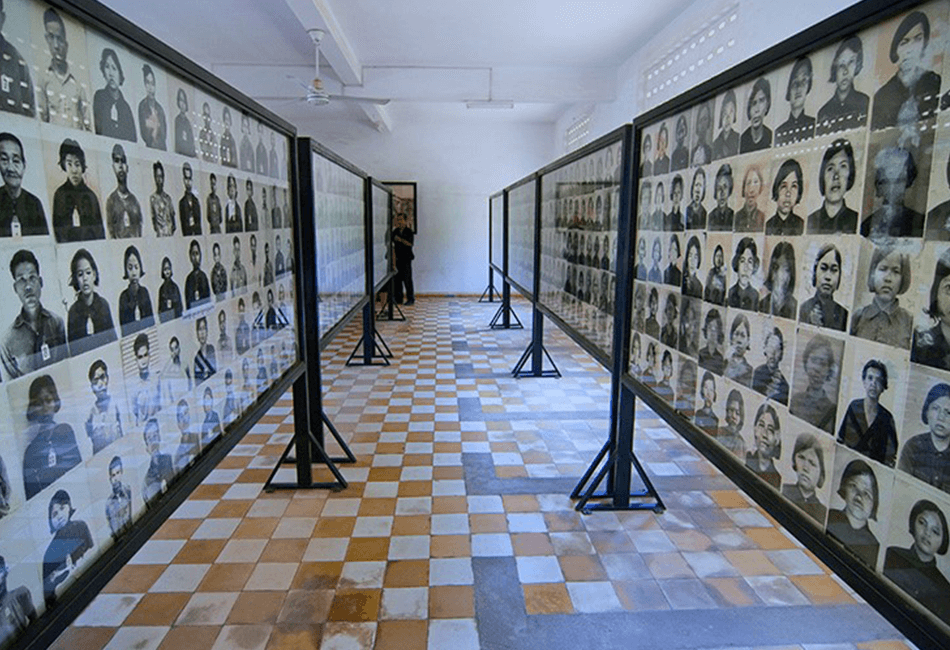
Tuol Sleng Genocide Museum and Killing Field Tour
- Duration: 4 Hours
- Destination: Phnom Penh
- Group Size: 2-12 People
$53
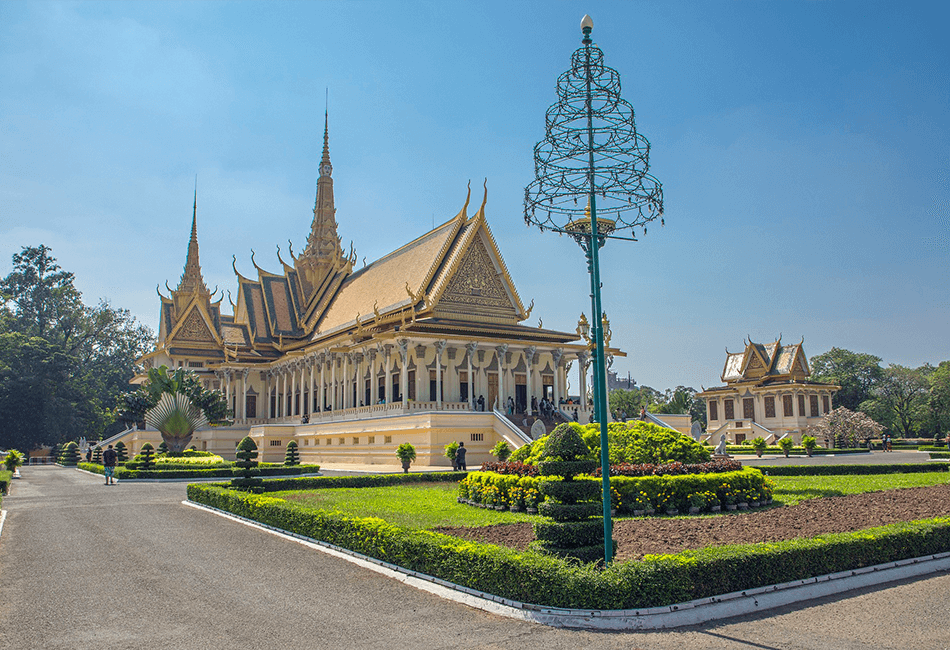
Phnom Penh Secrets Full-Day Tour
- Duration: 8 Hours
- Destination: Phnom Penh
- Group Size: 2-12 People
$110
2. Throne Hall (Preah Tineang Tevea Vinichhay)
The Throne Hall is the centerpiece of the Royal Palace and is used for coronations and royal ceremonies. Its towering spires and intricate designs are a testament to Khmer architecture. The hall is divided into three chambers, each with its own unique purpose. The central chamber houses the royal throne, while the other two are used for religious and administrative functions.
3. The Moonlight Pavilion (Phra Thinang Chan Chhaya)
This open-air pavilion is a favorite among visitors for its elegant design and historical significance. The Moonlight Pavilion has been the site of numerous royal performances, including traditional Khmer dance and music. Its location overlooking the Sisowath Quay offers stunning views of the Tonle Sap River, making it a perfect spot for photography.
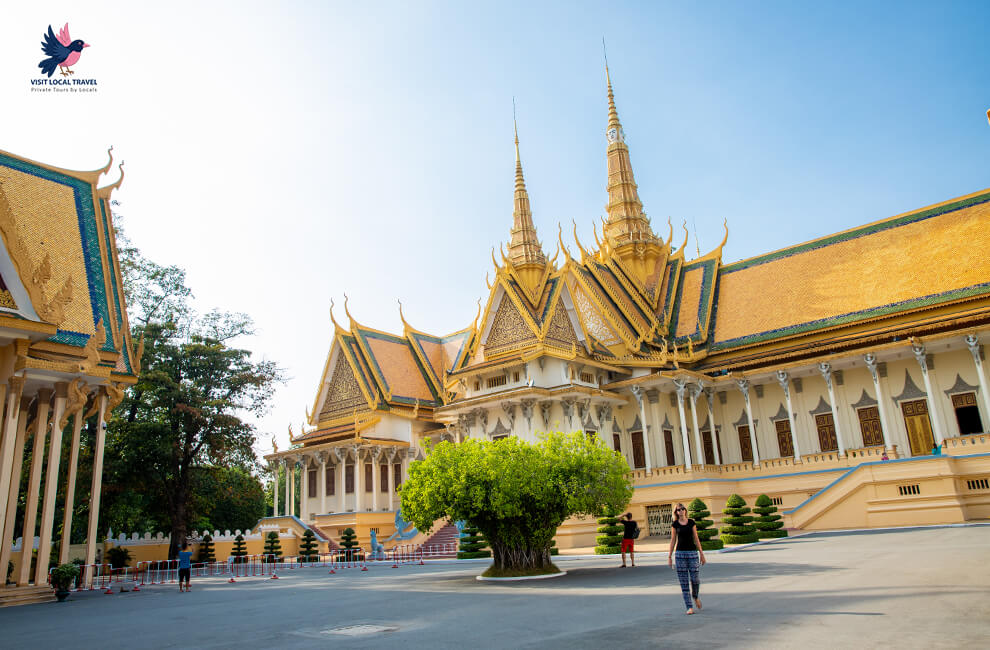
4. The Royal Gardens
The lush Royal Gardens surrounding the palace are a tranquil escape from the bustling city. Filled with tropical plants, fountains, and statues, the gardens provide a serene environment for a leisurely stroll. Keep an eye out for the statue of King Norodom, the founder of the palace, located near the entrance.
5. The Khemarin Palace
This is the official residence of the King of Cambodia. While visitors are not allowed inside, the exterior of the building is a sight to behold, with its golden roofs and traditional Khmer design.
A Guide to Adventure at the Royal Palace of Cambodia
Visiting the Royal Palace of Cambodia is more than just a sightseeing trip; it’s an adventure into the heart of Cambodian culture and history. Here’s how you can make the most of your visit:
1. Plan Your Visit Early
The palace is open to visitors from 8:00 AM to 5:00 PM, but it’s best to arrive early to avoid the crowds and the midday heat. The cooler morning hours also provide the best lighting for photography.
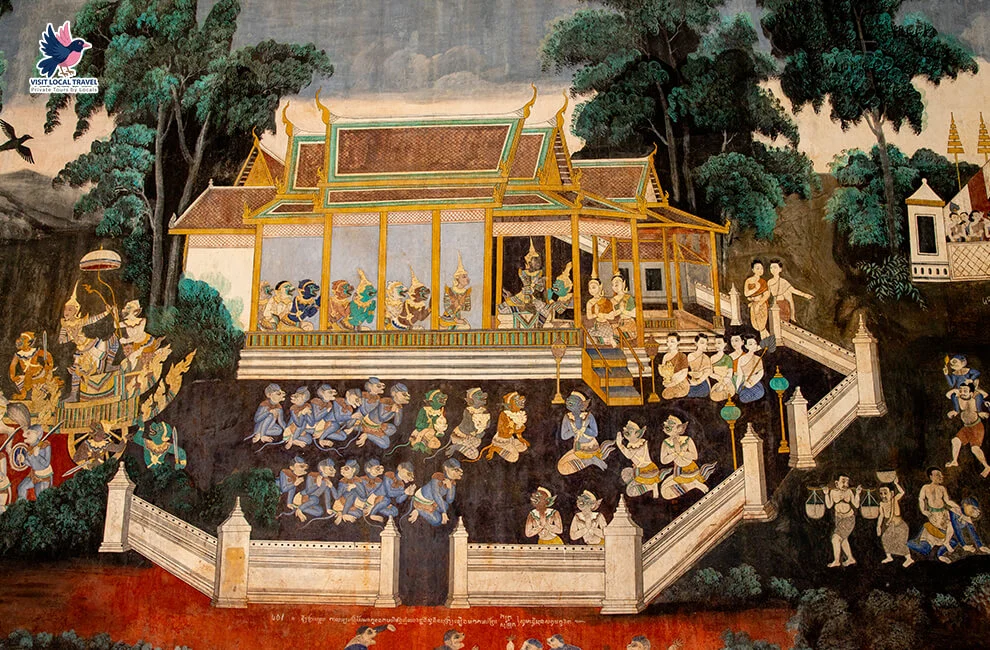
2. Dress Appropriately
As a place of cultural and religious significance, the Royal Palace has a strict dress code. Visitors are required to wear clothing that covers their shoulders and knees. Avoid wearing hats or revealing outfits, as they may be considered disrespectful.
3. Hire a Local Guide
To truly appreciate the history and significance of the palace, consider hiring a local guide. They can provide fascinating insights into the architecture, history, and traditions associated with the palace.
4. Explore Nearby Attractions
After visiting the Royal Palace, take the time to explore other nearby attractions. The National Museum of Cambodia, located just a short walk away, houses an impressive collection of Khmer art and artifacts. You can also visit the Wat Phnom, a historic temple that is said to be the founding site of Phnom Penh.
5. Experience Khmer Culture
While at the palace, don’t miss the opportunity to experience traditional Khmer culture. If you’re lucky, you might catch a performance of Apsara dance, a classical Cambodian dance that tells stories through graceful movements and elaborate costumes.
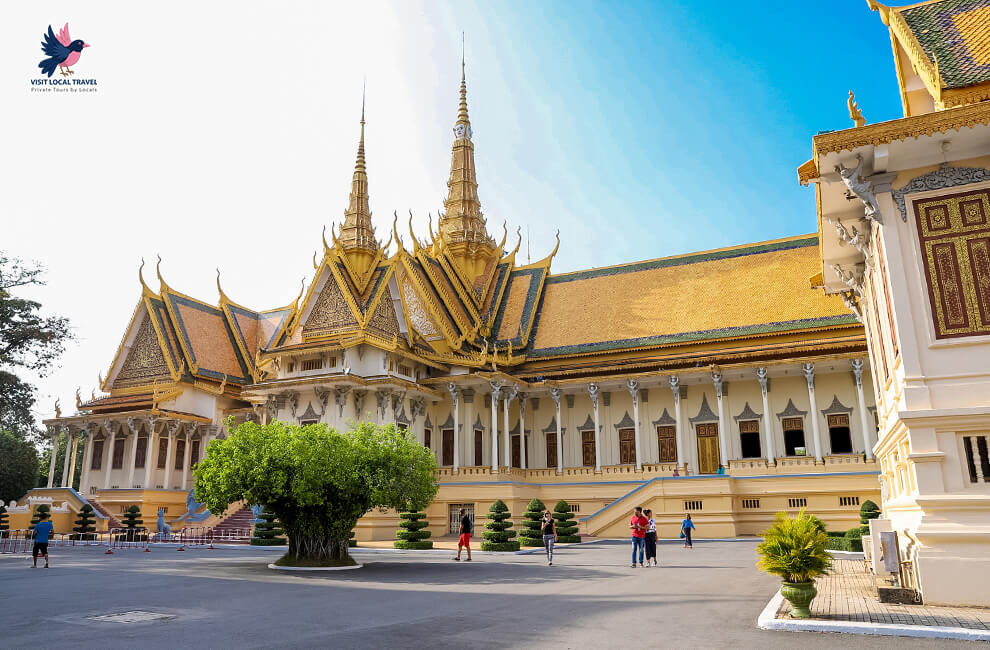
Tips for Visiting the Royal Palace of Cambodia
- Best Time to Visit: The best time to visit the Royal Palace is during the dry season (November to February), when the weather is cooler and more pleasant.
- Entrance Fee: The entrance fee is $10 for foreigners, which includes access to most areas of the palace complex.
- Photography: While photography is allowed in most areas, it is prohibited inside the Silver Pagoda and other sacred spaces. Always ask for permission before taking photos of people.
- Stay Hydrated: Phnom Penh can get extremely hot, so be sure to carry water and wear sunscreen.
Why the Royal Palace of Cambodia is a Must-Visit Destination
The Royal Palace of Cambodia is more than just a tourist attraction; it’s a living testament to the country’s rich history and cultural heritage. From its stunning architecture to its sacred treasures, the palace offers a glimpse into the soul of Cambodia. Whether you’re marveling at the Silver Pagoda, exploring the Throne Hall, or simply strolling through the Royal Gardens, every corner of the palace tells a story.
For adventure seekers, the palace provides a unique opportunity to immerse yourself in Cambodian culture and history. It’s a place where the past and present coexist, offering a truly unforgettable experience.
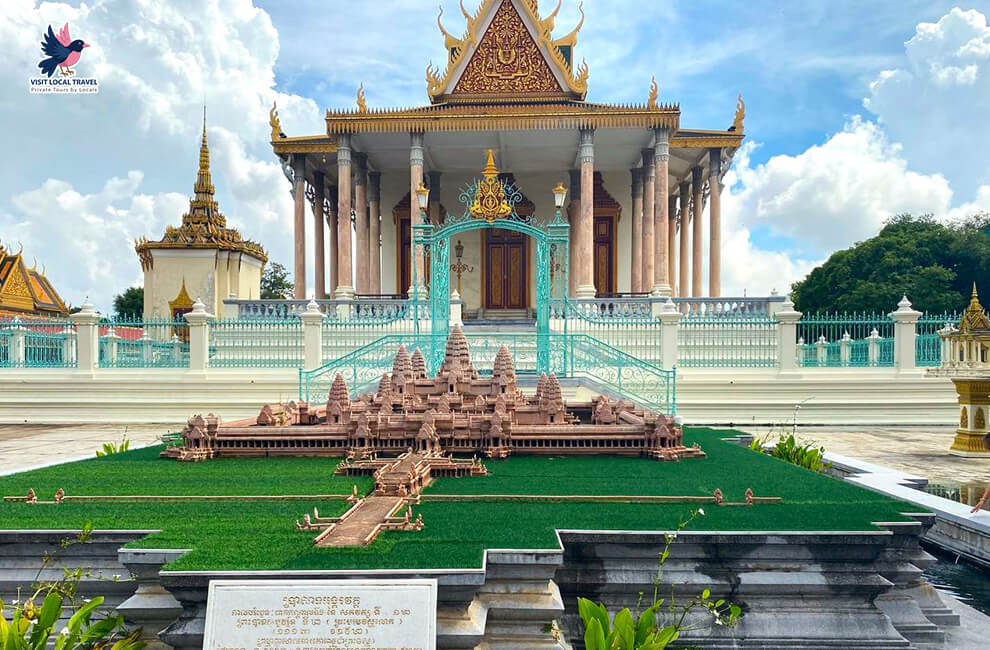
FAQs About Royal Palace of Cambodia
What is the Royal Palace of Cambodia?
The Royal Palace of Cambodia is a complex of buildings in Phnom Penh that serves as the official residence of the King of Cambodia. It is a symbol of the monarchy and a major cultural and historical site.
When was the Royal Palace constructed?
The Royal Palace was constructed in 1866 during the reign of King Norodom, after the capital of Cambodia was moved from Oudong to Phnom Penh.
What is the architectural style of the Royal Palace?
The Royal Palace features traditional Khmer architecture with intricate designs, golden spires, and ornate decorations. It also incorporates elements of French colonial influence.
What is the Silver Pagoda, and where is it located?
The Silver Pagoda, also known as Wat Preah Keo, is located within the Royal Palace complex. It is famous for its floor made of over 5,000 silver tiles and houses many national treasures, including a life-sized gold Buddha adorned with diamonds.
Can visitors enter the Royal Palace?
Yes, parts of the Royal Palace are open to the public, including the Silver Pagoda and the Throne Hall. However, the private residential areas of the royal family are not accessible to visitors.
What is the significance of the Throne Hall?
The Throne Hall is used for royal ceremonies and coronations. It features a tall spire and houses sacred objects, including royal regalia and thrones.
What are some notable artifacts in the Royal Palace?
Notable artifacts include the Emerald Buddha (a small crystal Buddha statue), the Golden Buddha (weighing 90 kg), and ancient Khmer artifacts displayed in the Silver Pagoda.
What is the role of the Royal Palace in Cambodian culture?
The Royal Palace is a symbol of Cambodia’s monarchy and cultural heritage. It represents the country’s history, spirituality, and the continuity of the Khmer royal tradition.
Are there any dress codes for visiting the Royal Palace?
Yes, visitors are required to dress modestly. Shoulders and knees must be covered, and hats must be removed as a sign of respect.
What is the best time to visit the Royal Palace?
The best time to visit is during the dry season (November to February) when the weather is cooler. Early mornings or late afternoons are ideal to avoid crowds and heat.
Wrapping Up
The Royal Palace of Cambodia is a must-visit destination for anyone traveling to Phnom Penh. Its rich history, stunning architecture, and cultural significance make it one of the most important landmarks in Southeast Asia. Whether you’re a history buff, a culture enthusiast, or an adventure seeker, the palace has something to offer everyone. So, pack your bags, put on your walking shoes, and get ready to embark on a majestic journey through the heart of Cambodia.
By following this guide, you’ll be well-prepared to explore the Royal Palace of Cambodia and make the most of your visit. Don’t forget to capture the memories, but also take a moment to soak in the beauty and history of this incredible site. Adventure awaits!




